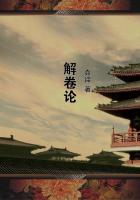Toutes ces montagnes sont formees de couches paralleles inclinees du centre de l'ile vers la mer." These statements have been disputed, though not in detail, by M.Quoy, in the voyage of Freycinet.As far as my limited means of observation went, I found them perfectly correct.(M.Lesson, in his account of this island, in the "Voyage of the 'Coquille'," seems to follow M.Bailly's views.) The mountains on the N.W.side of the island, which Iexamined, namely, La Pouce, Peter Botts, Corps de Garde, Les Mamelles, and apparently another farther southward, have precisely the external shape and stratification described by M.Bailly.They form about a quarter of his girdle of ramparts.Although these mountains now stand quite detached, being separated from each other by breaches, even several miles in width, through which deluges of lava have flowed from the interior of the island;nevertheless, seeing their close general similarity, one must feel convinced that they originally formed parts of one continuous mass.Judging from the beautiful map of the Mauritius, published by the Admiralty from a French MS., there is a range of mountains (M.Bamboo) on the opposite side of the island, which correspond in height, relative position, and external form, with those just described.Whether the girdle was ever complete may well be doubted; but from M.Bailly's statements, and my own observations, it may be safely concluded that mountains with precipitous inland flanks, and composed of strata dipping outwards, once extended round a considerable portion of the circumference of the island.The ring appears to have been oval and of vast size; its shorter axis, measured across from the inner sides of the mountains near Port Louis and those near Grand Port, being no less than thirteen geographical miles in length.M.Bailly boldly supposes that this enormous gulf, which has since been filled up to a great extent by streams of modern lava, was formed by the sinking in of the whole upper part of one great volcano.
It is singular in how many respects those portions of St.Jago and of Mauritius which I visited agree in their geological history.At both islands, mountains of similar external form, stratification, and (at least in their upper beds) composition, follow in a curved chain the coast-line.
These mountains in each case appear originally to have formed parts of one continuous mass.The basaltic strata of which they are composed, from their compact and crystalline structure, seem, when contrasted with the neighbouring basaltic streams of subaerial formation, to have flowed beneath the pressure of the sea, and to have been subsequently elevated.We may suppose that the wide breaches between the mountains were in both cases worn by the waves, during their gradual elevation--of which process, within recent times, there is abundant evidence on the coast-land of both islands.
At both, vast streams of more recent basaltic lavas have flowed from the interior of the island, round and between the ancient basaltic hills; at both, moreover, recent cones of eruption are scattered around the circumference of the island; but at neither have eruptions taken place within the period of history.As remarked in the last chapter, it is probable that these ancient basaltic mountains, which resemble (at least in many respects) the basal and disturbed remnants of two gigantic volcanoes, owe their present form, structure, and position, to the action of similar causes.
ST.PAUL'S ROCKS.
This small island is situated in the Atlantic Ocean, nearly one degree north of the equator, and 540 miles distant from South America, in 29degrees 15 minutes west longitude.Its highest point is scarcely fifty feet above the level of the sea; its outline is irregular, and its entire circumference barely three-quarters of a mile.This little point of rock rises abruptly out of the ocean; and, except on its western side, soundings were not obtained, even at the short distance of a quarter of a mile from its shore.It is not of volcanic origin; and this circumstance, which is the most remarkable point in its history (as will hereafter be referred to), properly ought to exclude it from the present volume.It is composed of rocks, unlike any which I have met with, and which I cannot characterise by any name, and must therefore describe.
The ******st, and one of the most abundant kinds, is a very compact, heavy, greenish-black rock, having an angular, irregular fracture, with some points just hard enough to scratch glass, and infusible.This variety passes into others of paler green tints, less hard, but with a more crystalline fracture, and translucent on their edges; and these are fusible into a green enamel.Several other varieties are chiefly characterised by containing innumerable threads of dark-green serpentine, and by having calcareous matter in their interstices.These rocks have an obscure, concretionary structure, and are full of variously coloured angular pseudo fragments.These angular pseudo fragments consist of the first-described dark green rock, of a brown softer kind, of serpentine, and of a yellowish harsh stone, which, perhaps, is related to serpentine rock.There are other vesicular, calcareo-ferruginous, soft stones.There is no distinct stratification, but parts are imperfectly laminated; and the whole abounds with innumerable veins, and vein-like masses, both small and large.Of these vein-like masses, some calcareous ones, which contain minute fragments of shells, are clearly of subsequent origin to the others.
A GLOSSY INCRUSTATION.
Extensive portions of these rocks are coated by a layer of a glossy polished substance, with a pearly lustre and of a greyish white colour; it follows all the inequalities of the surface, to which it is firmly attached.When examined with a lens, it is found to consist of numerous exceedingly thin layers, their aggregate thickness being about the tenth of an inch.It is considerably harder than calcareous spar, but can be scratched with a knife; under the blowpipe it scales off, decrepitates, slightly blackens, emits a fetid odour, and becomes strongly alkaline: it does not effervesce in acids.(In my "Journal" I have described this substance; I then believed that it was an impure phosphate of lime.) Ipresume this substance has been deposited by water draining from the birds'
dung, with which the rocks are covered.At Ascension, near a cavity in the rocks which was filled with a laminated mass of infiltrated birds' dung, Ifound some irregularly formed, stalactitical masses of apparently the same nature.These masses, when broken, had an earthy texture; but on their outsides, and especially at their extremities, they were formed of a pearly substance, generally in little globules, like the enamel of teeth, but more translucent, and so hard as just to scratch plate-glass.This substance slightly blackens under the blowpipe, emits a bad smell, then becomes quite white, swelling a little, and fuses into a dull white enamel; it does not become alkaline; nor does it effervesce in acids.The whole mass had a collapsed appearance, as if in the formation of the hard glossy crust the whole had shrunk much.At the Abrolhos Islands on the coast of Brazil, where also there is much birds' dung, I found a great quantity of a brown, arborescent substance adhering to some trap-rock.In its arborescent form, this substance singularly resembles some of the branched species of Nullipora.Under the blowpipe, it behaves like the specimens from Ascension; but it is less hard and glossy, and the surface has not the shrunk appearance.















